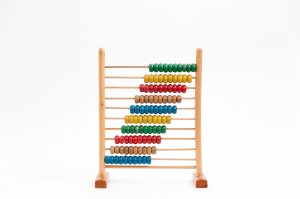 It’s difficult to shed those extra pounds, especially with so many theories and diets you find available. In Louisiana, people are turning to carb counting. Any type of diet can be unhealthy if taken to extremes. The same is true for carb counting. Reducing carbs can be done healthily by focusing on low-carbohydrate foods like vegetables and eliminating simple carbs, like cake and other products with added sugar. Here is a guide to counting carbs that will keep you healthy.
It’s difficult to shed those extra pounds, especially with so many theories and diets you find available. In Louisiana, people are turning to carb counting. Any type of diet can be unhealthy if taken to extremes. The same is true for carb counting. Reducing carbs can be done healthily by focusing on low-carbohydrate foods like vegetables and eliminating simple carbs, like cake and other products with added sugar. Here is a guide to counting carbs that will keep you healthy.
You can balance macronutrients to lose weight.
Change your mindset from calories to micronutrients if you want to use carb counting to shed those extra pounds. Macronutrients are carbohydrates, proteins, and fats. Traditional diets derive 45 to 65% of their calories from carbohydrates, 10 to 35% from protein, and 20 to 35% from fat. Low carbohydrate diets limit their calorie intake from carbs to 26% of their diet or less. Extremely low carbohydrate diets reduce the number of calories to 10% of calories from carbs. Calculate the calories you need daily, then multiply that amount by the appropriate percentage. If you’re on a 1500-calorie diet and deriving 20% of your calories from carbohydrates, you’d get 300 calories from carbs.
There are several types of carbohydrates and your body reacts to each differently.
If you break down the category of carbohydrates, you’ll find starches, sugars, and fiber. Sugar is divided further into food with added sugar and naturally occurring sugar. Some are simple carbs, and some are complex. Simple carbs break down quickly, causing blood sugar to spike. Food with natural sugar, like fruit, also contains fiber that slows the absorption of sugar. The goal of a low-carb diet is to avoid the spike in blood sugar and keep your blood sugar level.
You don’t cut out carbs completely.
A low-carb diet still requires tracking your food. It also requires you to make healthy decisions. One gram of carbohydrates translates to four calories. If 20% of your diet comes from carbs and you are on a 1500-calorie diet, multiply 1500 by .20 and get 300, which is how many calories from carbs you need. Divide the 300 by four to get the number of grams of carbs. In this case, it’s 75 grams. Make a healthy choice. About 10 cups of broccoli, 22 cups of celery, or almost 46 cups of fresh spinach all contain about 75 grams of carbohydrates. You’d get more than your entire daily allotment of carbohydrates in two cans of coke.
- Reducing carbohydrates can help lower your risk of insulin resistance and diabetes. It also helps lower cholesterol levels. When you decrease carbohydrates, you eat more fat and protein. Both fill you and keep you full longer.
- Most food labels contain the information you need for a low-carbohydrate diet. They also show if the carbs are from sugar or fiber. Make sure you check out the serving size, too.
- If you’re trying to lose weight, you’ll need to identify your ideal weight, activity level, gender, and goals. All those will determine the number of calories you require, which is the first step to counting carbs.
- Our personalized meal plans can help make carb counting easier. We provide complete meal plans with shopping lists and recipes. All you have to do is buy the groceries. It’s carb-counting simplified.
For more information, contact us today at Wellness On A Dime Coaching
